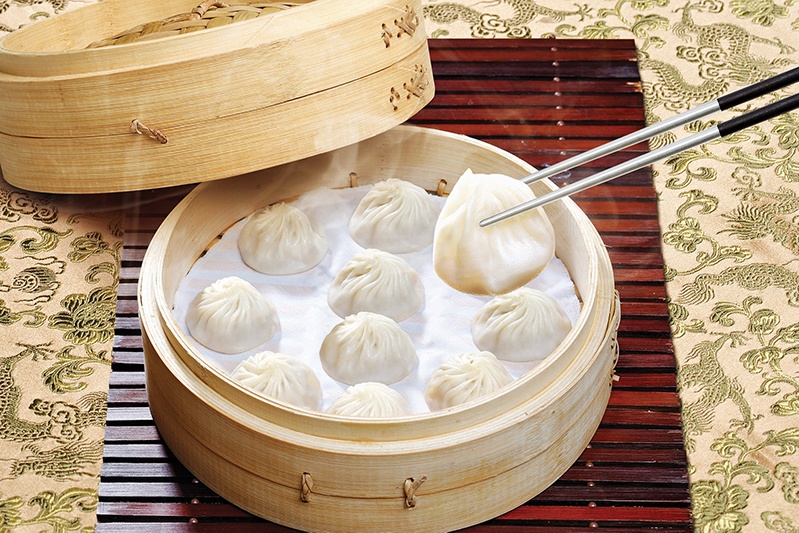
“Let’s get Chinese...”
More than seven out of 10 Aussies like Chinese food, making it the most popular international cuisine in Australia, according to a 2016 report by Roy Morgan Research.

Chinese food has been a menu mainstay in Australia since the 1850s when gold rush fever saw a spike in immigration. Ninety per cent of Chinese miners came from Canton (now Guangdong province in southern China), establishing cookhouses in the goldfields of New South Wales and Victoria, so Cantonese-style dishes, such as sweet and sour pork, are what most Australians associate with Chinese food. Later waves of Chinese migration hailed from other southern China regions – Taishan and more recently Fuzhou in the Fujian province. In her book, The Fortune Cookie Chronicles, Chinese food expert Jennifer 8. Lee notes that Fuzhou is the single largest exporter of Chinese restaurant workers in the world today.
In China, a nation of 1.4 billion people – the most populous in the world – across 34 provinces, there is no single culinary style. With myriad dishes, cooking techniques and traditions across China, there’s a reason your average suburban Chinese takeout has more than 200 dishes on its menu. As Chinese cuisine expert Fuchsia Dunlop notes: “China has the world’s preeminent cuisine, absolutely unparalleled in its diversity and its sophistication.”
Historically China is known for eight regional culinary styles – Cantonese, Sichuan, Hunan, Shandong, Fujian, Jiangsu, Zhejiang and Anhui – although Radio Guangdong travel show host Luc Bian neatly divides the country thus: “Noodles are popular in the north and rice is eaten more in the south”.
Long before superfoods were a dietary buzzword, Chinese traditions tapped into the healing properties of ingredients. At the launch of Luke Nguyen’s cookbook The Songs of Sapa in 2009, I chatted to the TV chef about the concept of ‘warming’ (yang) and ‘cooling’ (yin) foods to balance energies in the body. According to traditional Chinese medicine, flavours are pungent, sweet, sour, bitter and salty, affecting different organs.
Texture is also important to food appreciation in China – gelatinous ingredients, such as fish maw and sea cucumbers; gristly foods such as chickens’ feet; the springy, chewy texture (known as ‘QQ’) of noodles; and the smooth slippery mouthfeel of tofu or egg dishes. There's also auspicious foods associated with events such as lunar new year. Eating fish, dumplings, spring rolls and glutinous rice cakes are delicious choices to bring a bounty of good fortune in the coming year.
RELATED: Kung hei fat choi! Here's how to celebrate Chinese New Year
For those unfamiliar with Chinese characters, navigating a menu or just knowing where to eat, CGTN (China Global Television Network) America journalist He Wenjin says restaurant review apps such as Baidu (the equivalent of Google in China) and Dazhong Dianping (the Chinese version of Yelp) are your go-to.
Mama’s making Canton

Authentic Chinese cooking is “not all about lurid sweet and sour pork, MSG-laden sizzling beef, and chicken and cashew nuts in a gloopy sauce”, says chef-restaurateur Kylie Kwong, a fourth-generation Chinese-Australian, in her cookbook, Heart and Soul.
Indeed, Aussies who have grown up with this abridged style of southern Chinese cuisine will discover authentic Cantonese features crisp seasonal ingredients, fresh ocean fish and delicate sauces as well as sweet roasted meats. Former New York Times restaurant critic Ruth Reichl wrote that “cooks from southern China are famous for their ability to bring out the essential nature of every ingredient – this is a cuisine of simplicity and inspired combination”.
The spot to sample authentic Cantonese is Guangzhou, capital of China’s most populous province, Guangdong. Guangzhou local Luc Bian says Cantonese cuisine is a balance between flavours, textures and the highest quality, fresh ingredients.
Cantonese is also the dominant culinary style in Hong Kong. Dim sum (or yum cha meaning ‘drink tea’ in Cantonese) is synonymous with the Hong Kong dining experience. While dim sum originated in Guangzhou, Hong Kong has elevated the rolling brunch with establishments such as Dim Sum Library incorporating high-end ingredients of black truffles, foie gras and wagyu beef into its bite-size offerings.
Tim Ho Wan is another Hong Kong institution, dubbed the world’s most affordable Michelin-starred restaurant. This famous dim sum spot began as a non-descript hole-in-the-wall in Mong Kok, earning a Michelin star in 2010 within a year of opening. There’s now almost 50 Tim Ho Wan outlets worldwide, including two in Australia. Classic dim sum dishes include har gau (the delicate, almost translucent plump prawn dumplings), char siu bau (fluffy barbecue pork buns) and siu mai (steamed seasoned pork dumplings).
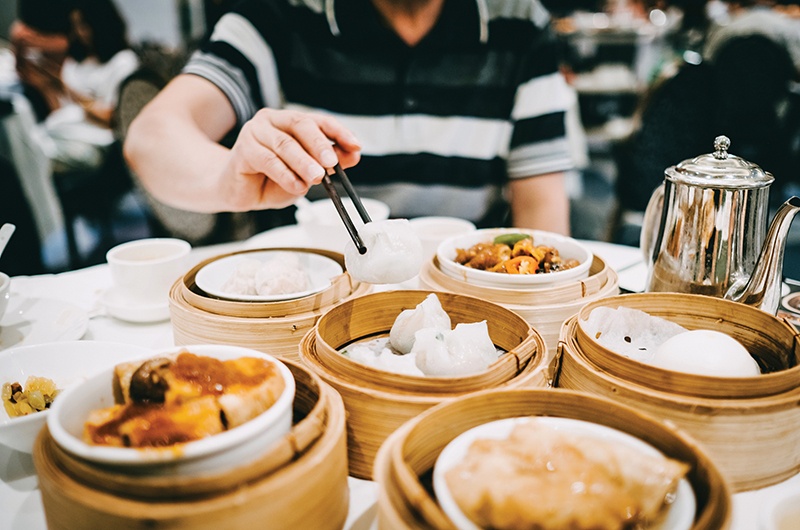
Where to get your fix
> Like a local – In Guangzhou, Luc recommends Guangzhou Restaurant, Lin Heung Lou and Tao Taoju Restaurant. Guangzhou Restaurant in Liwan is one of the city’s most traditional restaurants and now has several outlets. Lin Heung Lou, which opened in 1889, specialises in moon cakes, while Tao Taoju Restaurant, established in 1880, serves five rounds of dim sum a day with around 300 types of dim sum available.
> Starry-eyed – Canton 8 in Huangpu, Shanghai, the world’s cheapest two-Michelin-starred restaurant, dishes up dim sum and Cantonese cuisine at affordable prices. Signature dishes include char siew (roast pork) and prawn balls.
> High-roller restaurant – Contrast Canton 8 with Fook Lam Moon in Wan Chai, Hong Kong – known as the ‘tycoons’ canteen’ for its pricey Cantonese menu of suckling pork, abalone, fish maw and crispy chicken amid understated decor and expert service.
Shanghai surprise
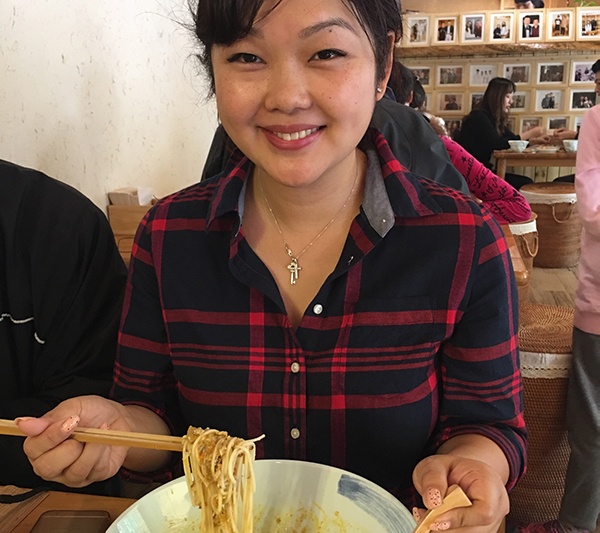
The variety of Jiangsu or Shanghainese cuisine – think sweet, braised meats; fresh crustaceans, fish and herbs; and fried noodles – is what Shanghai-born, New York-based blogger Cindy Zhou (@chubbychinesegirleats) misses most about China. “The variety of salty sweet is endless – I always have withdrawals when I come back to the US,” she says.
Chinese food and culture historian Barbara Nichol notes that all transported food cultures undergo change – how much depends on the period, what local produce is available and other shifts. This is evident in the evolution of xiao long bao – traditional Shanghainese soup dumplings that have earned cult status and even its own hashtag: #xlb.
Chef-restaurateur Corey Lee of renowned San Francisco restaurant benu says Taiwan-based restaurant chain Din Tai Fung has elevated the thicker Shanghainese-style soup dumpling to the very thin dough that most diners would associate with xiao long bao.
Din Tai Fung is synonymous with xiao long bao. Din Tai Fung USA vice president Aaron Yang, grandson of founder Bingyi Yang, says his grandfather moved from Shanghai to Taiwan as a teenager during the Chinese Communist Revolution, working as a cooking oil delivery boy before buying and transforming the shop into a tiny four-table restaurant.
“[My grandfather] decided on xiao long bao as a specialty because it was a popular dish for the locals. He also felt he could differentiate his xiao long bao by paying attention to the details and having consistency in the way they were made,” Aaron says.
This precise craftsmanship ensures the reassuring familiarity and quality of your xiao long bao in Din Tai Fung restaurants worldwide. The hand-rolled dough is made from scratch – thinner at the edges and thicker in the middle to hold the weight of the rich gelatinous broth and minced pork. The filling is measured on individual scales and each dough tortilla is pleated into a spiral of 18 folds and weighed to preserve its integrity during the three-minute steaming process. Aaron estimates around 5,000 to 10,000 dumplings are produced daily in each restaurant.
“It takes three to six months to learn the basics of how to make xiao long bao the way we make them at Din Tai Fung. To perfect the skill takes several years,” he explains.
Another Shanghai dumpling is shen jian bao (the fried version of soup dumplings). In his Netflix series Ugly Delicious, celeb chef David Chang refers to shen jian bao as “the most underrated and greatest dumpling in the world”. Cindy describes them as “pan-fried pockets filled with a burst of soupy magic”. With a crisp fried base, a soft steamed top and an umami-laden broth inside, shen jian bao are irresistible hot out of the pan with vinegar at Laoshexing Tangbao in Changning.
Other must-try Shanghainese dishes include hong shai rou – fatty, melt-in-your-mouth layers of red braised pork belly in a sweet soy sauce; and anything with hairy crab when this delicacy is in season. The crab roe is particularly prized; Cindy recommends the ‘crab gold noodle’ dish at Shanghai Crab House in Changning. While the dish is an eye-watering 360 yuan (around AUD$72), she says it’s worth it.
“Each epic bowl of noodles has 12 crabs’ worth of ‘gold’ aka roe. The owners have a crab farm in Yangcheng Lake, which is the area for the best hairy crab.”

Where to get your fix
> The OG #xlb – Xinyi Road is the site of the original Din Tai Fung shop in Taipei, Taiwan and the spot to slurp your fill of their famous xiao long bao. In Shanghai, Cindy loves the crab-only xiao long bao at Jia Jia Tanbao in Huangpu.
> A cult classic – Thanks to Rick Stein’s Taste of Shanghai, Ah Da’s Spring Onion Pancakes became a foodie phenomenon with up to six hours’ wait at the tiny back alley shop in Huangpu. Purveying Shanghai’s best cong you bing (scallion pancake) – golden brown and crispy outside and soft inside with savoury pork and spring onions – Mr Wu aka Ah Da has been making cong you bing for 36 years. Visit his new location at Yongjia Lu.
> Like a local – Haosheng Jiujia is a private, reservation-only Shanghainese restaurant in Xujiahu with just six tables. There’s no menu, so show up early and ask the owner what’s available and let them help you select dishes.
From imperial Beijing to jian bing
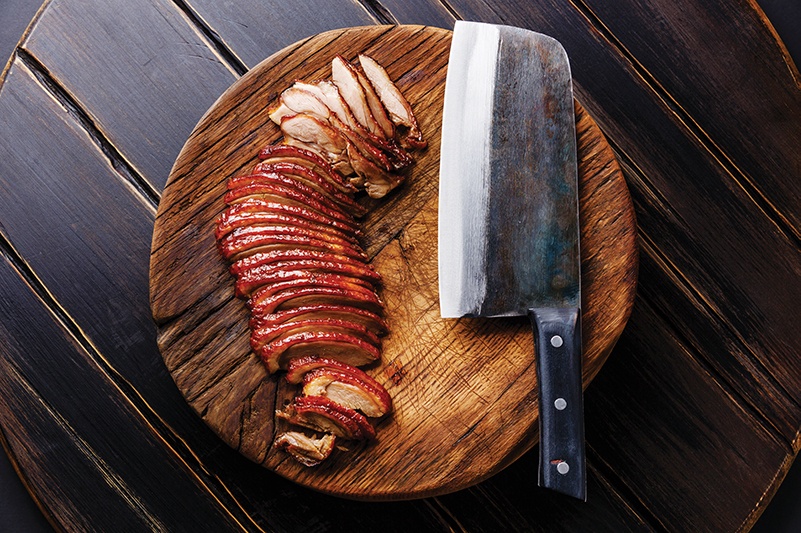
Modern Beijing cuisine is derived from the Shandong culinary style, which is characterised by its use of a wide variety of ingredients and cooking techniques. “Go to Beijing to taste some imperial food, Shandong cooking, the wonderful wheat foods of the north,” Chinese food expert Fuschia Dunlop told Tyler Cowen during their Medium podcast chat. “This is the wheat-eating part of China.”
Hand-pulled noodles, a popular dish at Chinese lunar new year that symbolises long life, are a tradition of this province, however Beijing’s most famous dish is Peking duck, named for the former moniker of the Chinese capital. Dating back to imperial cuisine, Peking duck is distinguished for its thin, crisp skin – a result of double-cooking techniques.
Conversely, sea cucumber is prized in Shandong cuisine for its slippery texture. As Fuschia tells chef David Chang in Ugly Delicious: “Texture is so important in Chinese food and part of the whole pleasure and experience of eating. Often for Chinese itself, it’s difficult to explain the food to people who don’t speak Chinese.”
One Beijing-style dish that doesn’t need translating is jian bing, a texture contrast of soft egg crepe with crunch from lettuce, spring onions, coriander and wonton crackers and a punch from sweet-savoury-hot sauces such as black bean and chilli. This street-food breakfast staple can be found all over the city and it’s mesmerising to watch the deft movements as an egg is cracked and spread over the thin soy-milk crepe, topped with fillings and sauces and folded neatly.
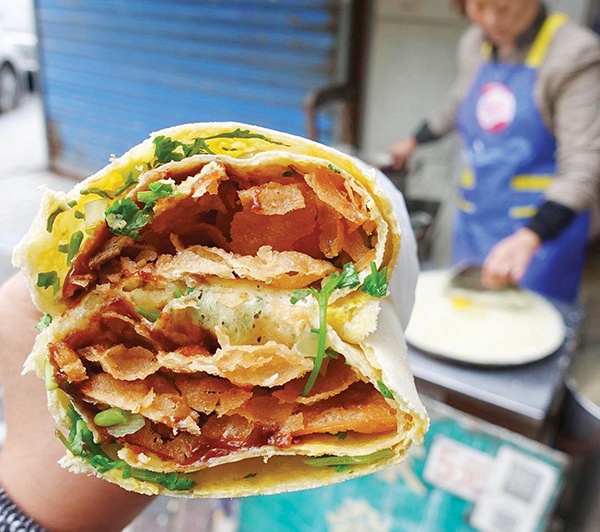
Where to get your fix
> Peking around – Quanjude dates back to the Qing dynasty and specialises in Peking duck, including the world’s biggest roasted duck restaurant at its Hepingmen outlet in Xuanwu. In Shanghai, Cindy recommends the one Michelin-starred Dadong Haishen Store restaurant: “The best Peking duck I’ve ever had. Perfectly crispy skin, not fatty at all. Eat with a paper-thin wrap or puff pastry.”
> Imperial forces – Ting Li Guan, an imperial cuisine-style restaurant inside the Summer Palace, served royalty in the Qing dynasty and was rebuilt by Empress Ci Xi in the mid-19th century. Waitresses wear traditional costumes and meals are equally impressive with exquisite presentation and delicate flavours, including, yes, sea cucumber.
This article originally appeared in Travel ideas: Asia #3 magazine, which is available in stores and to read online.



